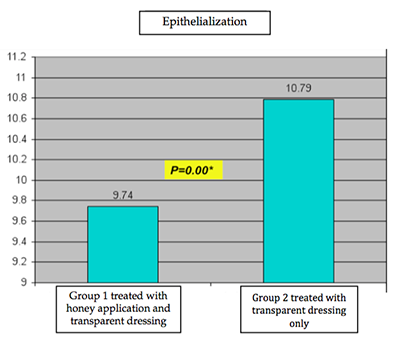Application of Honey and Transparent Dressing to Split Thickness Skin Graft Donor Site and Its Effect on Epithelialization Rate
DOI:
https://doi.org/10.14228/jpr.v1i3.73Abstract
Background: Split thickness skin graft (STSG) is one of the modalities used to close a defect. The donor site can be healed secondarily with tulle grass and moist gauze after 14 days and with transparent dressing will take about 10-13 days. Recently the wound healing by using honey application has been used. Whether or not using honey application with transparent dressing will hasten the epithelialization rate of the STSG donor site is now in question.
Method: This research is an open, non-randomized clinical trial with a parallel design and intervention using honey application with transparent dressing. A total of 19 patients (7 female and 8 male) were included in this study. The reapplication of honey was done every two days. The patients was followed up every day, with clinical photograph taken and complaints such as pain, odor and infection noted.
Results: The mean epithelialization rate of the donor site treated with honey and transparent dressing was 9,74 (+0,24) days compared to 10,79 (+1,23) days in the transparent-dressing-only group (p=0,00).
Conclusion: The application of honey with transparent dressing to cover for STSG donor site led to a faster epithelialization rate, less odor and less pain. Commercial honey was used, and readily available.

Downloads
Published
Issue
Section
License

This work is licensed under a Creative Commons Attribution-NonCommercial-NoDerivatives 4.0 International License.
Authors retain the copyright of the article and grant Jurnal Plastik Rekonstruksi the right of first publication with the work simultaneously licensed under a Creative Commons Attribution License. Articles opting for open access will be immediately available and permanently free for everyone to read, download and share from the time of publication. All open access articles are published under the terms of the Creative Commons Attribution-Non-commercial-NoDerivatives (CC BY-NC-ND) which allows readers to disseminate and reuse the article, as well as share and reuse of the scientific material. It does not permit commercial exploitation or the creation of derivative works without specific permission.













